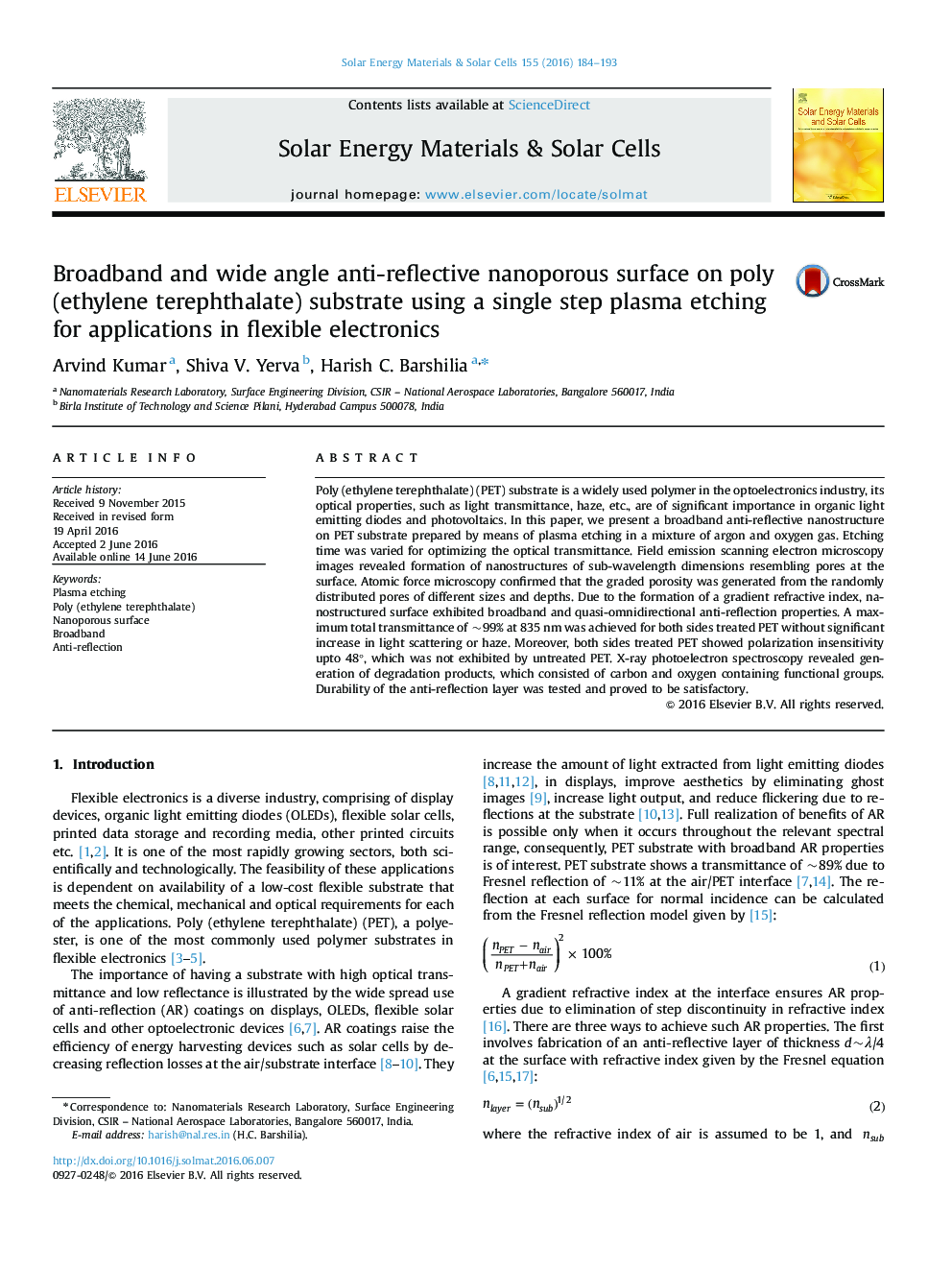| کد مقاله | کد نشریه | سال انتشار | مقاله انگلیسی | نسخه تمام متن |
|---|---|---|---|---|
| 77504 | 49283 | 2016 | 10 صفحه PDF | دانلود رایگان |
• Nanoporous surface on PET substrate was prepared by Ar+O2 plasma treatment.
• Maximum total transmittance of ~99% was achieved with broadband AR effect.
• Nanoporous surface exhibited quasi-omnidirectional AR property.
• Treated surfaces showed good stability and durability.
Poly (ethylene terephthalate) (PET) substrate is a widely used polymer in the optoelectronics industry, its optical properties, such as light transmittance, haze, etc., are of significant importance in organic light emitting diodes and photovoltaics. In this paper, we present a broadband anti-reflective nanostructure on PET substrate prepared by means of plasma etching in a mixture of argon and oxygen gas. Etching time was varied for optimizing the optical transmittance. Field emission scanning electron microscopy images revealed formation of nanostructures of sub-wavelength dimensions resembling pores at the surface. Atomic force microscopy confirmed that the graded porosity was generated from the randomly distributed pores of different sizes and depths. Due to the formation of a gradient refractive index, nanostructured surface exhibited broadband and quasi-omnidirectional anti-reflection properties. A maximum total transmittance of ~99% at 835 nm was achieved for both sides treated PET without significant increase in light scattering or haze. Moreover, both sides treated PET showed polarization insensitivity upto 48°, which was not exhibited by untreated PET. X-ray photoelectron spectroscopy revealed generation of degradation products, which consisted of carbon and oxygen containing functional groups. Durability of the anti-reflection layer was tested and proved to be satisfactory.
Journal: Solar Energy Materials and Solar Cells - Volume 155, October 2016, Pages 184–193
